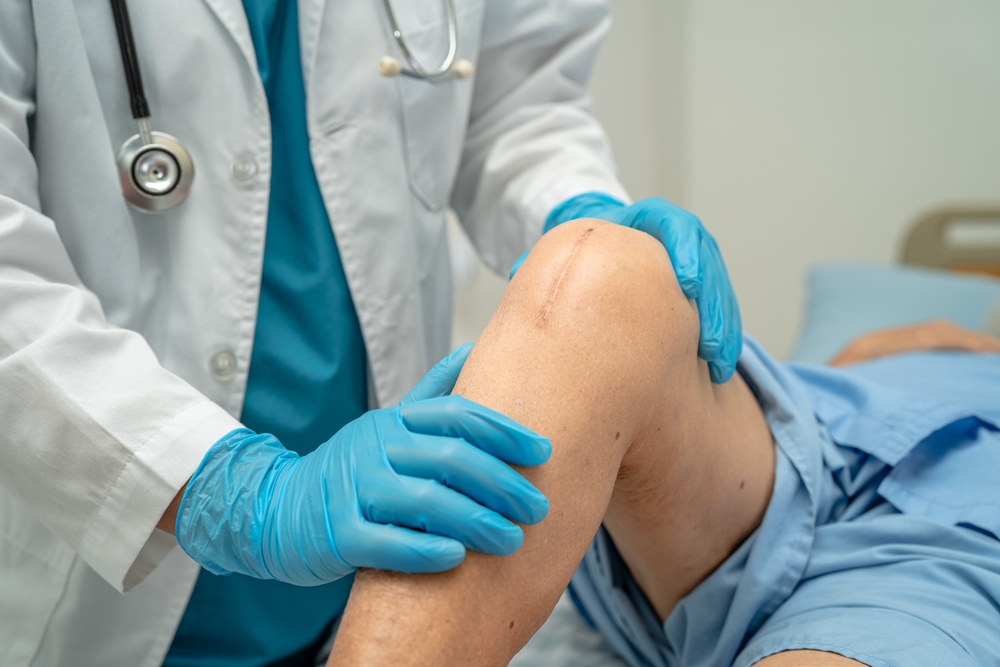Arthritis isn’t just occasional pain. It can become a chronic condition. It hinders movement and reduces quality of life. Arthritis is a chronic disease.
It significantly impacts patients’ quality of life. Especially when symptoms worsen. And when medical or physical therapies aren’t enough.
When joint pain becomes unbearable daily, and the patient is frustrated by the failure of medication and physical therapy, surgery emerges as a last hope.
Arthritis—the silent disease that erodes cartilage and deforms bones—affects millions worldwide. But the most important question is: when is surgery a necessity?

What is Arthritis and Why Might It Need Surgery?
Arthritis is a disease that affects joints. It’s characterized by inflammation of the synovial membrane, cartilage damage, and sometimes bone erosion. This causes pain, swelling, and restricted movement.
There are many types of arthritis. The most common are rheumatoid arthritis and osteoarthritis. In advanced stages, severe joint damage can lead to loss of function.
At this point, surgical treatment may become necessary to improve quality of life.
So, arthritis isn’t one disease. It’s a group of disorders. They cause gradual damage to cartilage and surrounding joint tissues. The most common types are:
- Osteoarthritis: Results from cartilage wear and tear with age or injuries.
- Rheumatoid Arthritis: An autoimmune disease where the body attacks joint tissues.
When Does Surgery Intervene for Arthritis?
When medication and physical therapy are slow and insufficient, surgery’s role begins.
Surgical intervention is used when conservative treatments aren’t enough. These include anti-inflammatory drugs, exercise, and lifestyle modifications.
Studies confirm that surgical interventions are considered after a comprehensive evaluation.
This includes pain, impact on daily activities, presence of anatomical changes in the joint, and patient response to other options.
In short, surgery becomes an option if:
- Medications and physical therapy fail after 3-6 months.
- Deterioration in mobility (like inability to climb stairs).
- Obvious joint deformities or unbearable pain at night.
Types of Surgical Procedures for Arthritis
Here’s an overview of some of the most important procedures doctors might suggest for arthritis. Especially in advanced cases of this disease.
Joint Replacement (Arthroplasty)
Imagine removing your damaged joint. And replacing it with a new artificial one. Complete or partial joint replacement is the most effective procedure. This is for damaged knee, hip, or shoulder joints due to advanced arthritis.
Research shows that artificial joints reduce pain. They also improve mobility and quality of life. This is true in over 90% of cases.
They last more than 15-20 years. At Liva Hospital, the intervention is done with micro-surgery or robotic surgery. This is by a multidisciplinary team. They get the patient back to activity as quickly as possible.
Joint Fusion (Arthrodesis)
Sometimes, the decision is final: we fuse the bones together. This way, the joint doesn’t move. Surgical fusion is an option for some hand, foot, or spinal joints.
It provides significant pain relief. But it reduces mobility. For example, ankle fusion may be best in extreme necessity instead of an artificial joint.
Arthroscopic Debridement and Cleaning
We access the joint with a clear lens and technique.
Arthroscopy is used to remove inflamed tissues, cartilage fragments, or bone spurs. Recent studies found it’s not very effective in reducing pain or improving mobility.
This is compared to conventional treatment. Especially in advanced knee arthritis.
Osteotomy
Imagine a geometric change in your bone. This is to relieve pressure. Techniques like osteotomy are used to redistribute weight.
This is on the healthy part of the joint. Especially in a knee damaged by anterior arthritis. It helps delay the need for an artificial joint. It particularly benefits younger or athletic patients.
Synovectomy
For those with severe synovial inflammation. In cases of rheumatoid arthritis or drug-resistant synovial inflammation, surgical or arthroscopic removal is used. This is to remove the inflamed membrane.
Studies indicate pain relief and increased mobility for years. Although the technique is rarely used due to the availability of effective drugs.

Outcomes and Safety of Surgeries
Operations are not without minor risks. These relate to non-healing, bleeding, or infection.
However, joint replacements, especially hip and knee, have proven highly effective. Around 95% of patients experience significant improvement in pain and quality of life after two years.
Data also showed that shoulder joint replacement outcomes are advanced in young people. This is compared to fusion and arthroscopy.
Conclusion
Yes, arthritis can be treated with surgery. This is when conservative options fail. Joint replacement is the most effective treatment.
Followed by fusion and osteotomy techniques for special cases. Meanwhile, arthroscopy is less effective in advanced cases.
Not all cases of arthritis require surgery. But when it becomes the only option, modern techniques in centers like Liva Hospital transform it.
From a frightening procedure, it becomes a real opportunity to restore normal life. Accurate diagnosis and choosing the right surgical team are key.
Joint Surgeries at Liva Hospital in Turkey
Liva Hospital is a specialized center for knee, hip, and shoulder joints. It offers:
- Precise, advanced surgeries via video or robot for joint restoration.
- High-quality artificial limbs with designs that suit the patient.
- Orthopedic options for younger ages, like osteotomy.
- A comprehensive follow-up team including physical therapy before and after surgery. With continuous evaluation to ensure safety and stable results.
Frequently Asked Questions (FAQ)
Who are candidates for surgery?
Patients suffering from chronic pain. This affects their daily lives. And is accompanied by changes in MRI or X-ray imaging.
How long does an artificial joint last?
Artificial limbs are often used for 15-20 years. Some last up to 30 years.
Is the surgery very painful?
Pain is controlled after coordinating medications and physical therapy. Liva Hospital‘s precise method helps reduce discomfort.
Can I return to sports?
After recovery, non-strenuous activities can be resumed. Like walking, swimming, and cycling. Intense sports may be prohibited.
Do all cases require surgery?
Not all cases. Only those unresponsive to conservative treatment. Careful planning leads to an appropriate decision for them.
Is surgery safe?
Yes, especially in specialized centers like Liva. Strict standards are applied in sterilization, immobilization, and controlled monitoring.



